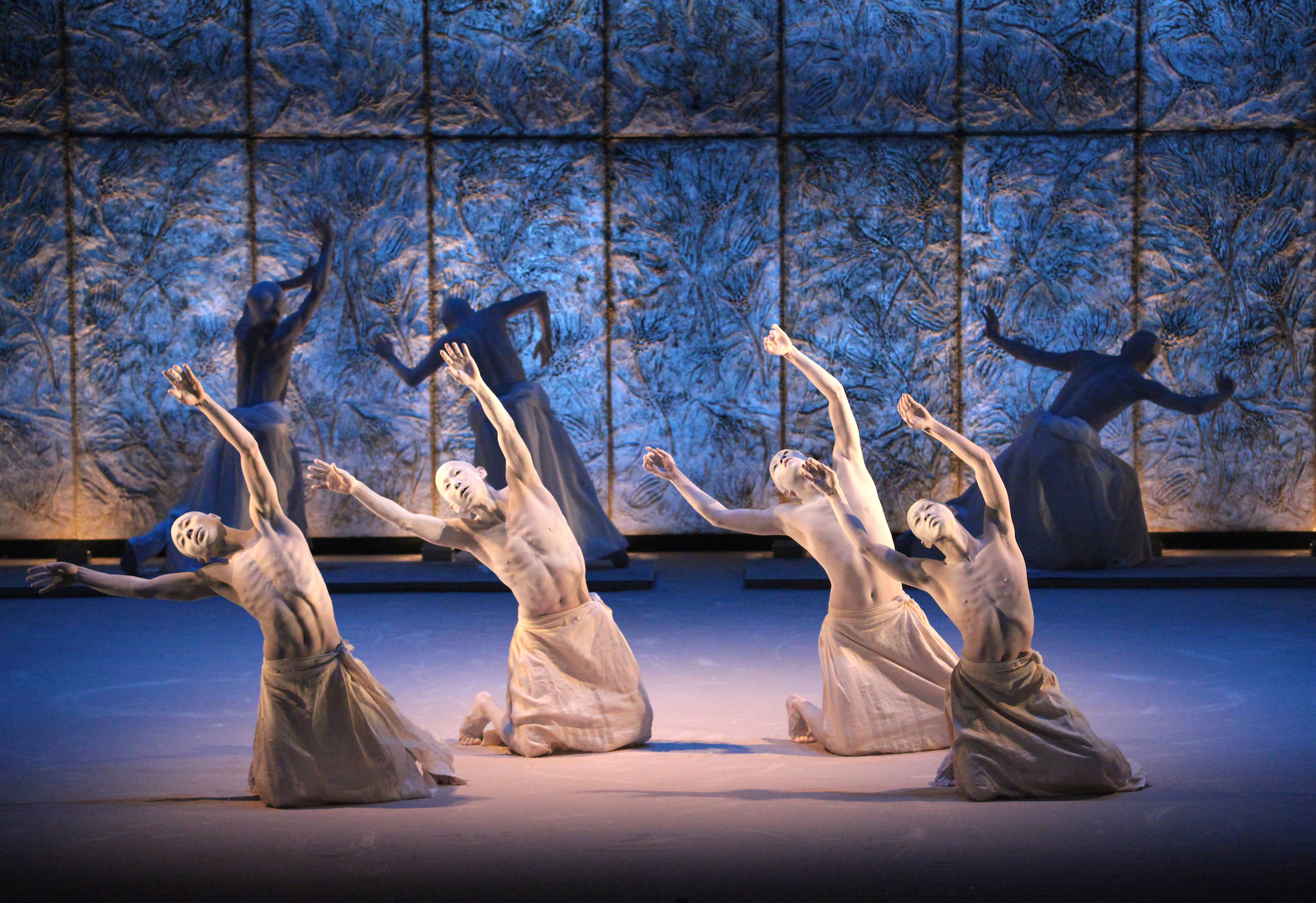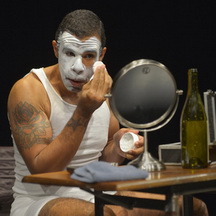The extraordinary butoh dance company Sankai Juku performed this weekend at Zellerbach Hall as part of Cal Performance’s World Stage series. The company was formed in 1975 by Ushio Amagatsu, who is choreographer, designer and director.
Like much of Japanese dance and theater, the 90-minute performance moved at a slower pace than American and European dance. But it is precisely this slow and sustained movement deeply attached to the ground and gravity that creates the performance’s particular and abstract beauty. Each gesture, each step, no matter how small and fleeting, is infused with significance as the audience contemplates what it means to inhabit a human body that moves on the surface of this spinning planet and is submerged entirely in its enormous forces.

The seven performers were dressed only in cream-colored skirts, their bodies and faces completely white, their heads hairless. Sometimes the skirts were knee-length but for the most part they reached to the floor. In one dance flashes of red cloth were woven into the skirts, in another a drape of bluish green. The minimal color was repeated in a contained wash of a red or green spot across the background of panels that created an unmoving wall at the back of the stage.
The panels, which appeared to be about two foot by six foot but rose from floor to flies, were called a “Realization of Sea Lilies” and repeated the same abstract pattern. They were based on an image of fossils from a Paleozoic sea creature, but they looked equally like the dense stackings of muscle tissue, and echoed the intimate interior of the dancers’ bodies. When light shined on them they took on the quality of gold leaf in the background of a Japanese screen. The costumes were by Masayo Iizuka and the panels by Roshi.
The dance was set to a music that was both electronic and ethereal in sound, a dissonant contrast to the lines of the painted white bodies that, under the theater’s white lights, revealed every muscle and sinew of the performers’ bodies in clear definition.
The piece performed was titled Meguri: Teeming Sea, Tranquil Land, and the movements of sea and land, with birds flying above, comprised the gestures of the dancers. The first movement, “The Call from the Distance” showed the company’s lead dancer moving slowly across the stage. There was no backtracking or fiery gymnastics, only a slow progression across the front of the stage with the small movements of walking, but within them was suggested all things human that are linked to our physicality and, consequently, our mortality.
In the second movement “Transformation on the Sea Bottom, six dancers lay on their backs in a circle their heads toward each other, their legs up in a partially fetal image. They moved legs and hands gently as if they were the fronds of a giant sea anemone.
Then bright blue lights created an ocean pool in the middle of the stage and as dancers entered the water, the lights from above made it seem as if water had soaked up from the blue below into the men’s trailing skirts. In another movement, a standing dancer turned and thrashed, lifting the sand on the stage into small clouds around him.
In the program notes Amagatsu writes that the word meguri “refers to phenomena like circulating water and all things that rotate.” Included in that are time, the seasons and the transitions that mark the planet.
This was a haunting performance and within it the performers were able to capture not only a persistent otherworldliness but also a profound illustration of humanity’s physical world, its joys and its pains.
—Jaime Robles
